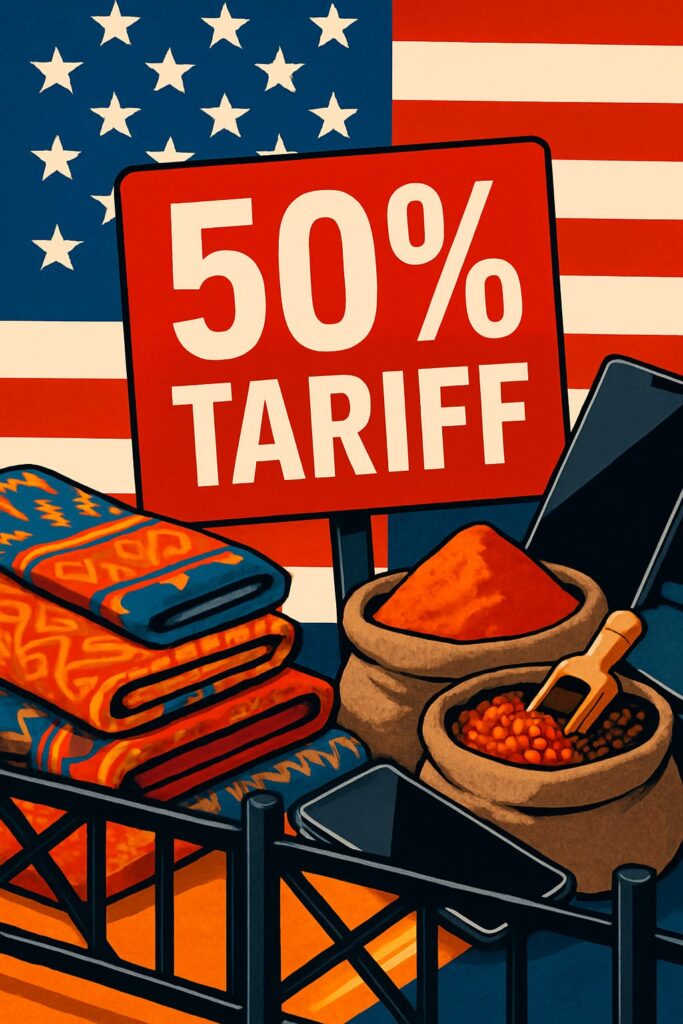50% Tariff Drama: Why the U.S. is Making Life Tough for Indian Exports
Intro: What Just Happened?
So, here’s the big headline—the United States has slapped a 50% tariff on Indian goods. Yep, you read that right. Half the value of what India sends to America now gets taxed at the border. It’s not just a random move either—it’s tied to India’s oil trade with Russia and some ongoing trade disagreements.
This sudden hike has left exporters, small business owners, and workers in India scratching their heads—and for good reason.
Why Did Uncle Sam Do This?
America and India are close partners, but trade is always tricky. The U.S. government says:
India’s still buying a lot of oil from Russia despite sanctions.
There’s a trade imbalance—India sells way more to the U.S. than it buys.
Certain American companies feel India makes it harder for them to sell here.
The 50% tariff is basically Washington’s way of saying: “Play fair, or pay up.”
Who’s Feeling the Heat in India?
This tariff isn’t just numbers on paper—it’s hitting real industries hard:
Textiles & Apparel: Factories in Tiruppur and Surat are slowing down. Workers fear job cuts.
Jewelry & Gems: Exporters are worried their U.S. clients will switch to cheaper suppliers.
Steel, Aluminum, Copper: Big manufacturing hubs are staring at shrinking margins.
India’s Chief Economic Adviser even warned this tariff could shave off about 0.5% of India’s GDP if it continues.
How’s India Responding?
India’s not just sitting quiet. Here’s the plan:
Relief Package: The government is working on credit support and incentives for exporters.
New Markets: Trade talks with the EU are moving fast—India wants to reduce its dependence on U.S. buyers.
Strong Words: Commerce Minister Piyush Goyal said straight up—“India will not bow down.”
On top of that, India cut GST rates on hundreds of consumer goods to push domestic demand.
What About the U.S.?
Let’s not forget—tariffs are a double-edged sword.
American buyers will now pay more for Indian products.
U.S. industries relying on Indian inputs may face supply chain headaches.
And politically, it could become a big talking point in the upcoming U.S. elections.
Global Reactions
China called the move “unfair and unreasonable.”
U.S. Business Groups are urging calm talks, because they don’t want relations to sour.
India has even approached the WTO to challenge the tariffs.
The Road Ahead
Will the 50% tariff last forever? Probably not. Experts believe both countries will sit down and work it out. India’s also smartly diversifying into Europe, Africa, and Asia.
But for now, exporters are stressed, prices are rising, and trade ties are being tested like never before.
Extra Insight: What Should Indian Businesses Do Now?
While the 50% tariff sounds scary, it’s not the end of the road. Indian exporters can take this challenge as an opportunity. First, businesses should focus on product diversification—don’t depend only on the U.S. market, explore Europe, Africa, and Southeast Asia. Second, companies need to add more value to their goods, so buyers stay loyal even if prices rise. Finally, digital channels like e-commerce exports (Amazon Global, Flipkart cross-border) can help small businesses tap international customers directly. In short, the tariff storm is tough, but smart businesses can still sail through it.
Wrap Up
At the end of the day, this isn’t just about numbers and percentages—it’s about people. Workers in India’s factories, American buyers paying extra, and governments trying to flex power.
The 50% tariff drama is definitely a rough patch, but history shows that India and the U.S. usually find a way to balance things out. Until then, it’s going to be a bumpy ride for exporters and global trade watchers alike.

